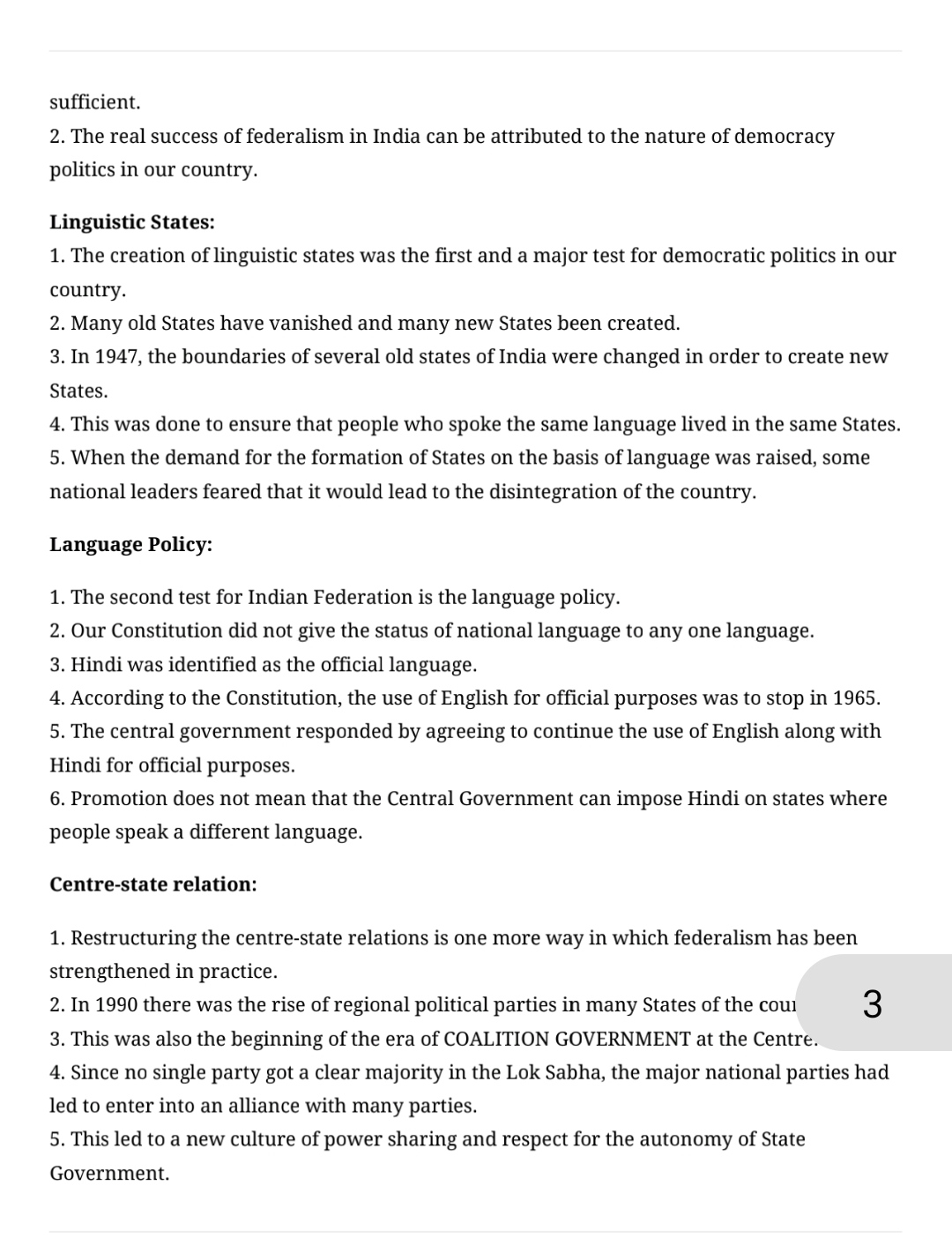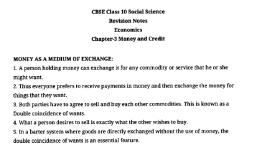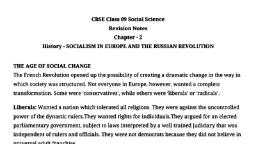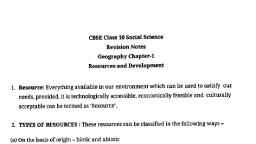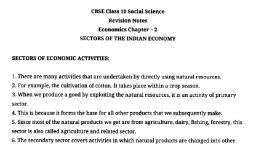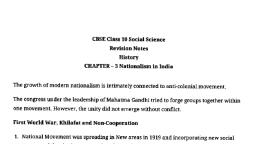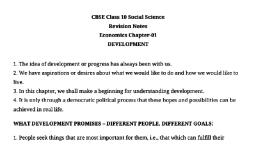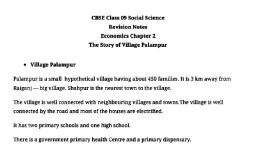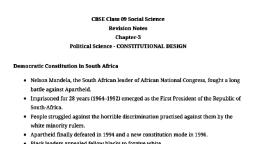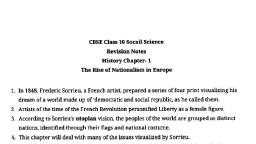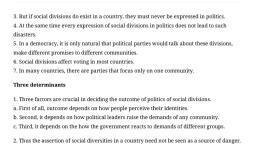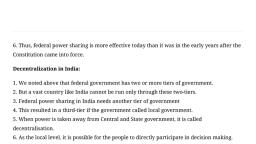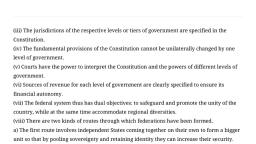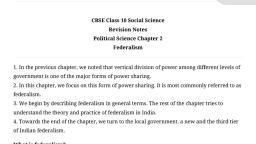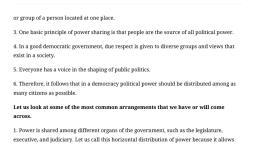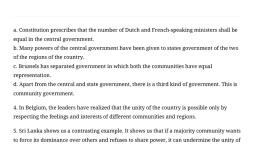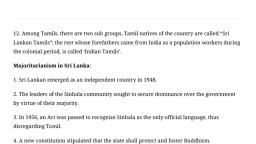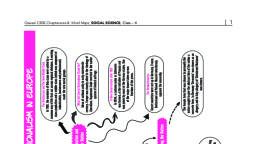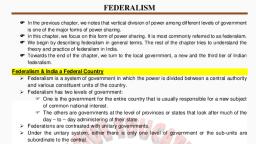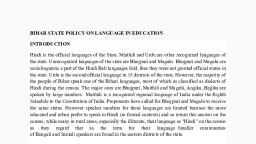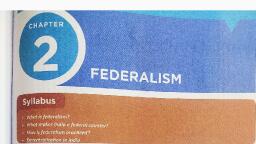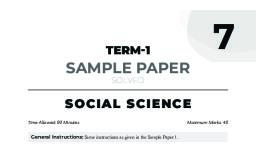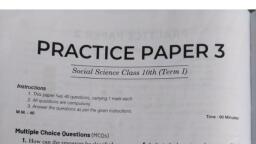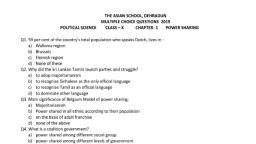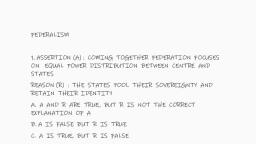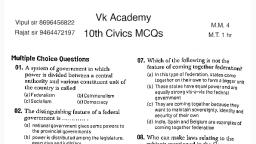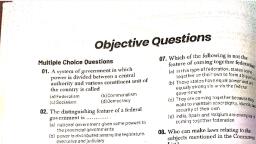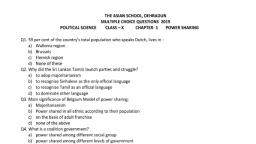Page 1 :
sufficient., 2. The real success of federalism in India can be attributed to the nature of democracy, politics in our country., , Linguistic States:, , 1. The creation of linguistic states was the first and a major test for democratic politics in our, country., , 2. Many old States have vanished and many new States been created., , 3. In 1947, the boundaries of several old states of India were changed in order to create new, States., , 4. This was done to ensure that people who spoke the same language lived in the same States., 5. When the demand for the formation of States on the basis of language was raised, some, national leaders feared that it would lead to the disintegration of the country., , Language Policy:, , 1. The second test for Indian Federation is the language policy., , 2. Our Constitution did not give the status of national language to any one language., , 3. Hindi was identified as the official language., , 4. According to the Constitution, the use of English for official purposes was to stop in 1965., , 5. The central government responded by agreeing to continue the use of English along with, , Hindi for official purposes., , 6. Promotion does not mean that the Central Government can impose Hindi on states where, people speak a different language., , Centre-state relation:, , 1. Restructuring the centre-state relations is one more way in which federalism has been, strengthened in practice., , 2. In 1990 there was the rise of regional political parties in many States of the cow 3, 3. This was also the beginning of the era of COALITION GOVERNMENT at the Centre., , 4. Since no single party got a clear majority in the Lok Sabha, the major national parties had, led to enter into an alliance with many parties., , 5. This led to a new culture of power sharing and respect for the autonomy of State, , Government.
